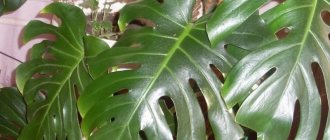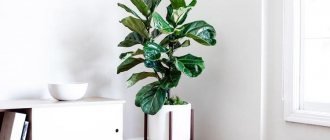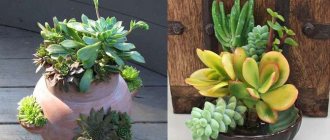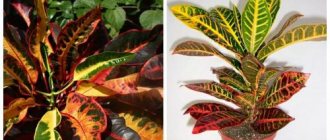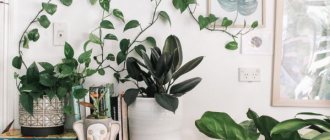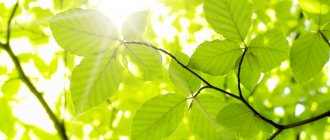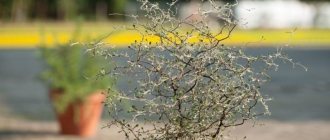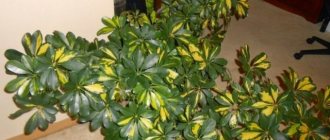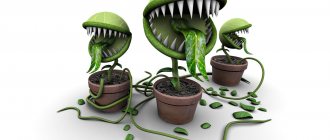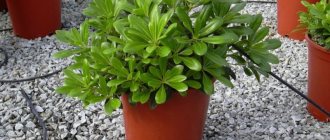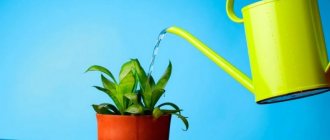Sinningia (Rechsteineria) white-haired
There are several names for the exotic plant: Sinningia white-haired, Rechsteineria (Rechsteineria) white-haired, Sinningia white-haired. Representative of the Gesneriev family. Few people can contain their delight when looking at this amazing plant. Everything about it is wonderful! The main highlight is, of course, the luxurious leaves. Silvery, velvety, iridescent leaves make Rechsteineria truly fabulous. And modest scarlet flowers only emphasize the beauty. However, in winter there is a period of dormancy and it sheds its leaves.
You can rarely find Rechsteineria on sale; the plant is quite rare. At the same time, it requires certain conditions that are difficult to comply with at home, so it is very difficult to grow it.
Kohleria - a mottled variety of bright colors
Kohleria in Latin, is a member of the Gesneriaceae family and has more than 50 species in its genus.
In old sources it can be found under the names “isoloma” and “tidea” .
And for its exquisite decorativeness, koleria is nicknamed “Colombian beauty” . The large oblong leaves of the plant, depending on the species, have a variety of colors and are densely pubescent over the entire surface.
The scaly tuber roots of Kohleria, called rhizomes, resemble small pine cones.
The velvety flowers of the plant look like bright bells bent at the edges on short peduncles. Each species has its own unique coloring of flowers, dotted with specks or small strokes.
Young flowers bloom single buds , while adults delight the eye with whole clusters of 5 or 6 bells. The plant blooms profusely and for a long time from June to September.
More than 10 species of “Colombian beauty” are grown at home, the most popular of which are:
Kohleria amabilis, in Latin, is a species with green leaves decorated with purple stripes along the veins. It blooms in small pink “gramophone” speckles with dark crimson speckles.
Foxglove flower, in Latin Kohleria digitaliflora , is distinguished by its abundant flowering of pinkish-white bells with green petals speckled with purple.
Kohleria hirsuta in Latin is a showy species with red mottled flowers and bronze foliage.
Kohleria eriantha, in Latin, has unusual green leaves bordered with reddish fluff, and flowers of an orange-red hue with yellow splashes on the petals.
Ginura
Ginura is a unique indoor plant that has a fantastic appearance. Belongs to the Asteraceae (Asteraceae) family. The hairy, velvety leaves are bright purple and green. The plant should be protected from excess air and soil humidity. It is better to grow ginura on an eastern or western window. After a few years, it loses its decorative effect and needs to be replanted. The plant is poisonous, so you can only work with it with gloves!
Benefits and harms
Does the Ginura plant have medicinal properties? Undoubtedly. It is believed that the presence of Ginura in the house accelerates metabolic processes in the human body. The flower cleanses the air of toxic substances. In addition, many believe that the bush relieves a negative aura, unnecessary fears and bad emotions.
IMPORTANT! The plant is slightly poisonous, so if you have wounds or cuts on your hands, you should avoid direct contact with the flower or work only with gloves. Due to the bad smell of flowers, allergies may occur.
Tradescantia sillamontana
Tradescantia sillamontana is an unpretentious plant. It has very interesting leaves with gray-olive pubescence. Representative of the Commelinaceae family. In addition to the fuzzy leaves, the indoor plant is distinguished by its delicate and minimalistic flowers. It has excellent drought resistance. By the way, in the wild, the crop grows in arid areas, which is why protective fibers appeared that reduce moisture evaporation and protect from overheating. Watering should be done moderately and very carefully. Spraying Tradescantia sillamontana is strictly prohibited. Feels best on a south-facing window sill.
Caring for gloxinia during the dormant period
The end of the gloxinia growing season occurs in mid-autumn.
When the above-ground part dies, the tuber gradually goes into a state of “hibernation”, ceasing to develop and consume moisture. At this time, it is important to first reduce and then stop watering altogether.
For the entire dormant period, as in the photo, caring for gloxinia at home changes. First of all, it is important to ensure safe storage of the tuber. They do this in one of two ways:
- the pot is transferred to a cool room where the air is no warmer than 10–15 °C, and sometimes moistened to prevent the tubers from drying out;
- After the foliage dies, the tubers are removed from the soil, cleaned and sprinkled with sand or sawdust and placed in the cold.
In the second case, the storage temperature of gloxinia tubers is 5–8 °C, and the substrate in which they are located must be dry or barely moist, otherwise the appearance of rot and mold cannot be avoided. This storage method is convenient because the planting material does not take up much space, and caring for gloxinias comes down to inspecting dormant tubers.
Episcia
An ornamental deciduous plant of the Gesneriev family is popular among plant growers due to its unpretentiousness and bright beauty of the leaves. About the latter I would like to say that they are beautiful because of their velvety surface, interesting color, pearlescent tint and veins. By the way, small flowers only emphasize the beauty of the leaves and are also worthy of attention.
It is best to place a pot of Episcia on an eastern or western windowsill because it does not tolerate direct sunlight, but without light the beauty of its leaves will fade. Soft diffused light is what you need.
Diseases and pests
When grown, the plant is not often exposed to disease.
The most common of them are:
- spider mite, due to which the development process of ginura is disrupted;
- aphids, which can cause its leaves to become deformed and turn yellow;
- scale insect;
- whitefly and mealybug.
During flower growth, you may encounter the following problems:
- Dull foliage and the plant weakens, this indicates the need for renewal;
- The leaves become dull, the bright hairs fade, but growth does not deteriorate. This means that the bush does not have enough light;
- Dark spots on the leaves due to careless handling of the foliage;
- Blackening and deformation of leaves. This problem occurs when wet leaves are in bright sun.
Smithianta
Smitianta is a prominent representative of the Gesneriev family. For maximum decorativeness, the plant needs bright but diffused light; a western or eastern window sill is suitable. A characteristic feature of Smithianta is a pronounced dormant period; at the end of flowering, the above-ground part dies off. During the dormant period, it is important to monitor the earthen lump; it should not dry out completely.
Climbing indoor flowers
Luxurious ivy and vines beautifully entwine walls, shelves or racks. You can grow quite a few different varieties and species in your room!
Monstera
Monstera is prized for its fancy and large carved leaves. It grows quickly and wraps around any support, attaching to it with thin aerial roots.
Cissus
Decorative cissus belongs to the grape variety and came to us from the islands. Special tendrils are firmly attached to the support, and the flower grows throughout the year - without pronounced dormant periods.
Tricolor morning glory
If morning glory grows in the garden for only a year, then in the room it is a lush flowering perennial with bright petals. It has rather large and heavy leaves, so it needs to be carefully tied to a support.
Wax ivy Hoya
The plant got its name from its unusual flower umbrellas, as if covered with wax. In order for ivy to grow more beautifully, it needs to be periodically replanted and tied up.
Stephanotis
The large vine reaches five meters in length and blooms with elegant fragrant flowers, for which it is also nicknamed Madagascar jasmine. The color of different varieties varies from soft cream to pale lilac.
Syngonium
Syngonium grows up to one and a half meters and clings tightly to the support. Among the variety of varieties, there are species with whitish, green or variegated leaves, which with age become lancet-lobed.
Dipladenia
Another climbing flowering guest from the tropics with large buds up to 10 cm in diameter. Dipladenia loves fresh air and open space, so in summer it can be taken to the balcony or street.
Plectranthus
Plectranthus or indoor mint is a very unpretentious, hardy and tenacious plant. In addition, indoor mint is very easily propagated by cuttings, so you can easily expand your plantation. Plectranthus has two advantages - a pleasant minty smell and velvety, carved, beautiful leaves. Under favorable conditions it can grow abundantly and quickly. Feels best in partial shade. Plectranthus belongs to the Lamiaceae family.
Kinds
One of the most common species of this plant is Ginura orange and wattle.
Ginura orange. The plant's homeland is considered to be mountain forests on the island of Java. It has greenish jagged leaves covered with lilac-colored hairs.
In spring, shrubs aged more than one year acquire yellow-orange flowers. They are usually cut off due to their bad smell and not very beautiful shape.
This species grows quickly and in a short period grows into a large lush shrub. After flowering, the plant soon withers and is replaced with a new one grown from cuttings.
Ginura wattle. The plant's homeland is East Africa. This species has small oval and smoothly toothed foliage, which is covered with velvety hair. She, like the previous species, has orange flowers with an unpleasant odor and external unattractiveness.
Abundant flowering leads to smaller foliage, so its flowers are most often removed immediately.
Typically, this Ginura is used to create flower arrangements, greenhouse or home decorations.
Aichrizon
The second name of aichrizon is the tree of love. A small bush of the Crassulaceae family has fleshy and fleecy leaves and neat, cheerful yellow flowers. The succulent is sensitive to waterlogging, which can cause rotting of the root system. Therefore, you need to water very sparingly. Requires diffuse lighting. For the full development of the entire bush, it is recommended to periodically turn the pot.
Planting and caring for a gloxinia tuber
Depending on storage conditions, the gloxinia tuber begins to grow from February to March. At this time it is important:
- remove from last year’s substrate, clean from remnants of old roots and soil;
- hold for half an hour with a slightly pink solution of potassium permanganate or treat with any available systemic fungicide;
- Immerse in a solution of heteroauxin or another growth stimulator for 12–24 hours so that the growth point in the recess is not exposed to the drug.
Most often, it is at the planting stage and during the subsequent, as in the photo, caring for gloxinia at home that the greatest risk of losing tubers appears. This happens due to their decay. Therefore, the pot must have at least 3–4 cm of drainage, and the tuber itself is sprinkled with soil no more than a centimeter deep.
The pot for gloxinia is chosen depending on the size of the tuber. For a young specimen, a container with a diameter of 7–9 cm is suitable, and a long-blooming tuber is planted in a pot up to 15 cm wide.
As a substrate, we can recommend a mixture of two parts of leaf soil, the same amount of peat and one part of washed sand. It is useful to sterilize the soil and also add a natural antiseptic to it, for example, a little crushed coal or sphagnum.
The planted tuber is covered with film or a bag and placed in a warm, well-lit place. The plant remains in such a shelter for several days, during which, apart from regular ventilation, special care for gloxinia at home is not required.
Koleriya
Koleria has picturesque, hairy leaves and colorful, hairy flowers. A spectacular representative of the Gesneriev family. Growing koleria should not cause any special difficulties; it is unpretentious and does not require certain conditions of detention. It needs full lighting, but in summer the pot should not be in a place exposed to direct sunlight. Koleria has a pronounced dormant period - in winter the above-ground part dies off. The pot with the root system must be kept in cool conditions in winter and replanted in the spring.
The velvet world of gloxinia
I really love gloxinias.
This is a very homely, very cozy, “velvet” flower. And this is also a memory of my mother, who also loved these flowers very much. Gloxinia
Description of the plant
Gloxinia or beautiful Sinningia is a perennial tuberous plant.
Gloxinia is a very beautiful indoor flower, which is why it is loved by many amateur gardeners. You never get tired of contemplating and admiring this plant. Several velvety flowers can bloom simultaneously on a short stem. Basically, gloxinia flowers have the shape of bells or shoes. Gloxinia
Gloxinia
The flowers of this plant have different colors, very juicy and elegant, with a wide range of various shades. Moreover, in addition to plain flowers (lilac, white, violet, red, crimson, blue, etc.) there are flowers with specks and with an elegant border. In general, for every taste. The leaves of Gloxinia also have an attractive appearance with the same velvety surface. Gloxinia
Growing conditions
Gloxinia loves:
- abundance of light
- high indoor humidity
Gloxinia does not like:
- direct exposure to sunlight
- spraying leaves with water
- drafts
- temperature changes
Gloxinia
Planting, transplanting and propagation
In spring, gloxinia tubers are planted in new healthy soil.
I buy special soil for indoor plants at the store. The soil is also suitable for indoor violets. The flower pot can be chosen from any material. The size of the pot depends on the size of the bulb. Do not plant a small onion in a large pot. The plant will fatten, then you can forget about abundant flowering.
Gloxinia
Gloxinia can be propagated in the following ways:
- seeds
- leaves
- dividing the tuber
- cuttings
Gloxinia
Watering and fertilizing
Watering gloxinia is carried out directly into the pan.
The water temperature should be slightly above room temperature. By autumn, watering gloxinia is reduced, because the plant needs to prepare for the dormant period. Gloxinia It is necessary to feed gloxinia regularly throughout the entire growing season (once every 10 days) with special fertilizers for indoor plants.
Gloxinia
Ads by
Features of cultivation
The peculiarity of growing gloxinia is that it requires a period of so-called dormancy, which begins in the fall and lasts until spring.
During this period, the above-ground part of the plant turns yellow and dries out. It is cut off at approximately 1-2 cm. The roots of the plant die off. Only the tubers remain intact, which do not need to be dug up, but simply left in the ground, placing the pot in a cool, dark place. Alternatively, the tubers can be dug up and stored in a plastic bag with vermiculite, placing it in the refrigerator or any other cool place. Gloxinia
Recently, it has become common practice to give indoor plants instead of cut fresh flowers. Well, gloxinia is an excellent option for this purpose. Give your loved ones this beautiful flower. I'm sure they'll like it.
Gloxinia
Columnea hairy
The ampelous plant is distinguished by long hanging shoots. At home, the columna looks very elegant and exotic. The bright red and orange fuzzy flowers are of interest. Belongs to the Gesneriev family. Requires full diffuse lighting. The soil should not be allowed to dry out, but watering should be moderate.
Columnea needs high air humidity; in this matter it is very sensitive. Without the necessary moisture, it will grow and bloom poorly. It is recommended to place the pot with the plant next to the aquariums, place the pot on a tray with expanded clay and water, and use a humidifier.
Reproduction
Koleria reproduces in the following ways:
- Stem cuttings. The cut cuttings need to be placed in water and after a week you can wait for the first roots to appear. Next, the cuttings are planted in a separate small pot.
- By dividing the rhizome. When transplanting, the scaly rhizomes of the plant should be divided into two or three pieces along with the shoots and planted in separate containers to a depth of no more than 2 cm. With regular watering, a new plant will grow from each piece of root.
- Seeds. Koleria seeds can be obtained through artificial pollination. In February or March, you need to plant them superficially in a peat-sand mixture in a “greenhouse”, regularly ventilating and watering the soil with a small sprayer. After the true leaves appear, the seedlings need to be planted in separate pots, and when they grow larger, they need to be pinched.
Watch the video for a master class on propagating koleria leaves at home:
[youtube https://www.youtube.com/watch?v=QLdTYoupGLA&w=700&h=395]
Gloxinia - growing conditions
The soil for growing gloxinia should be loose, fairly light, with coarse fibers. It is recommended to mix leaf, light turf soil, peat or coniferous soil, and add a little dry organic fertilizer and horn flour.
Gloxinia leaves
Since gloxinia originates from the tropical rainforests of America, it requires a warm, draft-free place on the windowsill, well lit, but slightly shaded from the sun.
Gloxinia lilac
If gloxinias are regularly fed, they will bloom from mid-spring to autumn. One plant can have up to 50 large flowers at the same time. After the leaves have flowered and died, it is better to place pots with gloxinia in a cool, dry place. In January-February, the tubers can be transplanted into fresh soil for better flowering.
Gloxinia leaves and buds
My mother has several pots of gloxinias, all of them are shown in the photo. Magnificent bloom! I recommend everyone to grow gloxinia at home.
The last photo shows my young gloxinia grown from a leaf.
Gloxinia crimson
Author Olga Bogach
If you are interested in other topics, you can read on the website:
- A story from the life of the cat Dulcinea with a happy ending,
- Do-it-yourself finishing of the facade of a private house with siding - photo,
- Mini high pressure washer,
- Flower Hellebore Caucasian - photo,
- Narcissus flower – photo,
- Forsythia shrub in landscape design – photo, description.
If you are interested in my stories about flowers and other plants, you can subscribe to updates in the form below or bookmark the site. Share the article with your friends on social networks.
Catalog of flowering indoor plants with photos and names
Azaleas or Rhododendrons Sims (lat. rhododendron simsii)
These are small shrubs strewn with bright large flowers. The foliage is dark green in color, the leaves are pubescent on the underside, and have a dense leathery covering on the front. The small leaves very favorably set off the magnificent white, red, pink, and sometimes two-color buds. The flower petals can be double or simple, but they are all quite large in size.
Azalea requires bright light, but allows partial shade. Abundant watering is needed during flowering at intervals of 2-3 days. In other periods, it is enough to water the flower up to twice a week. The optimal temperature does not exceed 15 degrees.
It is better to place the azalea on a tray of gravel and keep it moist. Flowers must not be wetted!
Rhododendrons do well in heather soil and in a shallow, wide container. Non-lime fertilizer should be applied once a month. Azaleas live up to 7 years if they are well cared for and taken out onto the veranda during the dormant period. But the life of this riot of colors in the apartment is limited to a few weeks.
Anthurium (lat. anthurium)
Popularly called “male happiness” or “tongue of fire”. The plant is a perennial, blooming red all year round. The inflorescence can be pink, yellow, white, always in the form of a cob. Heart-shaped leaves of dark green color on long petioles reach 40 cm. The height of the plant ranges from 40 to 80 cm, growing half a meter in width.
A man's happiness lasts for 3 years, then the leaves fall. To make the flower comfortable, partial shade or diffused light is required in the complete absence of drafts. Watering is carried out once every 4 days, fertilizing is carried out every three weeks during the warm period of the year.
Anthurium needs to be sprayed daily and at the same time manage not to get any drops on the inflorescence.
Primrose (lat. primula)
A perennial flowering plant with evergreen leaves up to 15 cm long. The foliage is corrugated and forms a rosette.
Bright primroses
The inflorescences are collected in umbrellas or solitary, the corollas are double or simple. There are varieties that combine a silvery coating on the petals and two-color petals or a bright core. There may be no smell.
In order for the flowering to be bright and long, it is better to choose the lightest place and water it in such a way that the soil is always moist. The leaves themselves cannot be watered.
It is better to place the pot on wet gravel. Primrose loves geranium soil and fertilizers.
After the plant has flowered, it is transferred to partial shade.
Geranium (Pelargonium)
This flower has a very pungent aroma that repels insects and pathogens. At the same time, prolonged stay near him can negatively affect a person’s general well-being and cause severe headaches . Therefore, you should not place geranium in a bedroom or children's room, even despite the fact that its flowers look very elegant and noble.
Geranium feels most comfortable in the sun from the western, as well as eastern and southeastern sides. The plant prefers good lighting, but it is advisable to avoid direct rays. The place where pelargonium is placed must be ventilated, the optimal temperature is 23-26 degrees; when heated to less than 10 degrees, this plant stops producing flower stalks. On hot summer days, geraniums require frequent watering; in winter, moisture should be minimized. In order for a flower to grow and develop well, it needs a medium-sized container. A mixture of leaf and turf soil, peat, humus and river sand is suitable as a substrate.
Begonia
Begonia is translated from Latin as “always blooming.” It received this name for its ability to bloom 12 months a year. This flower is distinguished by a rich color palette and decorative foliage. The plant requires full lighting, but the light must be diffused. Begonia grows best in damp conditions, but it is best to avoid spraying the leaves, as excess moisture causes unsightly brown spots to appear on their surface. You can maintain an optimal level of humidity by simply regularly adding liquid to the container tray. Watering should be carried out as the substrate dries; in summer, irrigation should be quite plentiful, and in winter - rare.
It is optimal to use chernozem with the addition of peat as soil for replanting begonias. This plant reproduces vegetatively - by stems, cuttings and division of rhizomes.
Balsam
This is one of the most unpretentious house plants. The culture is photophilous, but does not withstand direct ultraviolet rays. Balsam prefers warmth, but not heat. For full growth and flowering, it requires a temperature of 15-26 degrees, as well as daily spraying and abundant irrigation.
People call this culture “light”. And in fact, if you look at this plant during flowering, it will give the impression of a bright fire - this effect is created by the combination of inflorescences of deep pink and scarlet flowers. Flowering is long-lasting, usually lasting from June to November. However, when creating a comfortable microclimate, it can produce flower stalks at other times.
Clivia
The beautiful evergreen plant is named after Duchess Charlotte Clive, who was governess to the future Queen Victoria of Great Britain.
This flower arrived in Europe from South Africa, easily took root in northern latitudes and became a favorite of most gardeners.
An unpretentious plant will decorate any home or office space, but you must try not to move the pot and water it once a week.
